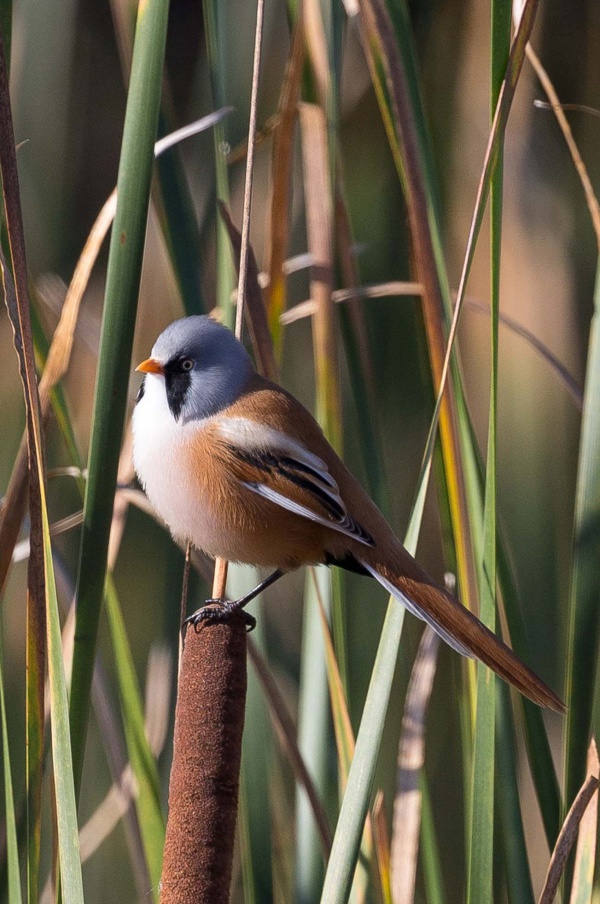Facts About Bearded reedling
The bearded reedling, also known as the bearded tit or bearded parrotbill, is a captivating small bird that thrives in reed beds. It is the sole species in the family Panuridae. Initially described by the renowned scientist Carl Linnaeus in 1758, this bird was first placed in the genus Parus and later associated with the parrotbills in the family Paradoxornithidae. However, recent research has established that the bearded reedling is a distinctive songbird with no close living relatives, resulting in its current classification in the monotypic family Panuridae. Intriguingly, molecular studies suggest its closest relatives are in the lark family, Alaudidae. The name Panurus originates from Ancient Greek, meaning "exceedingly" and "tail" while the specific name biarmicus refers to a region in Russia.
Visually, the bearded reedling is a striking bird. It features orange-brown plumage, a long tail, and a yellow-orange bill. Males are particularly distinctive with their grey heads and black "moustaches" whereas females are paler and lack these markings. Their unique "ping" call makes them easily identifiable in reed beds. As wetland specialists, they prefer to breed in extensive reed beds near lakes or swamps. Their diet varies with the seasons: in summer, they consume reed aphids, and in winter, they switch to reed seeds, with their digestive systems adapting accordingly.
These birds inhabit temperate Europe and the Palearctic region, with most populations being non-migratory, although they may move if the winter becomes too severe. In the UK, there are approximately 500 pairs, primarily located in the south and east of England, with smaller populations in Scotland and Ireland. The largest group in Great Britain resides in the reed beds at the mouth of the River Tay in Perth and Kinross, Scotland, home to over 250 pairs.

 Ireland
Ireland